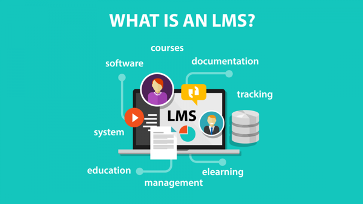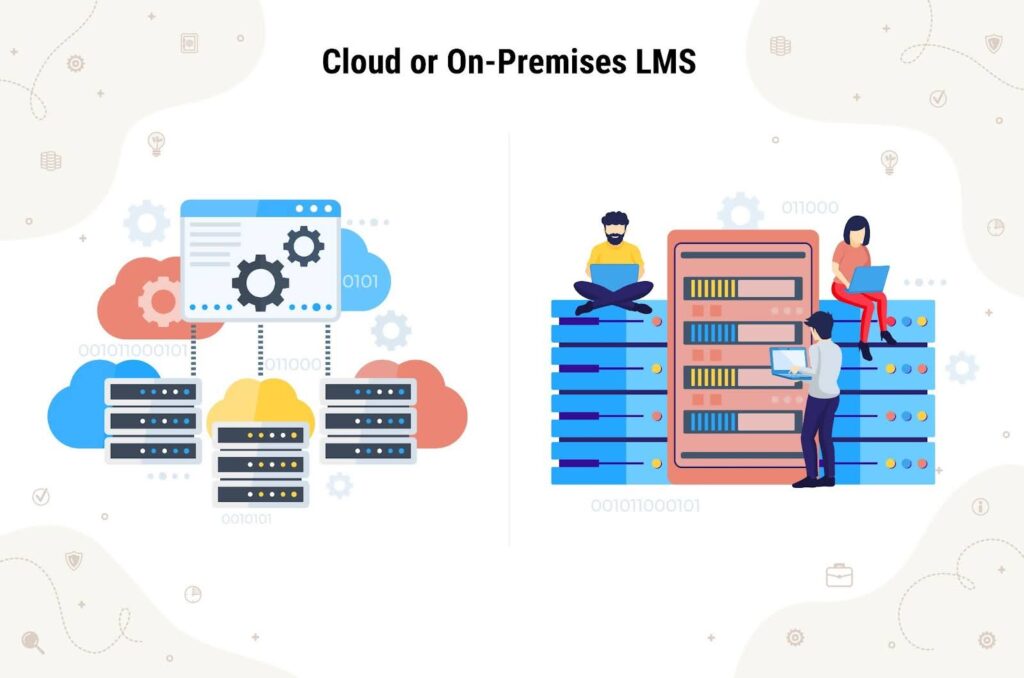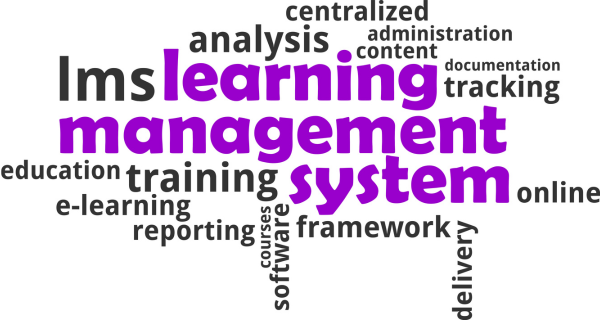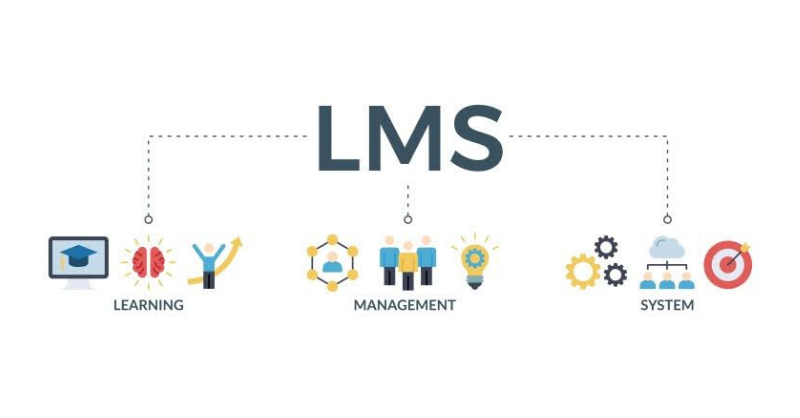Picture this: you’ve spent weeks developing the ideal training program for your staff. It’s jam-packed with useful knowledge, but when you deliver the training for the tenth time, you notice glased eyes staring back. Is there a better method to train your personnel that is both engaging and efficient?
Presenting here the Learning Management System (LMS), a game changer in corporate training. Consider it a virtual training hub, a platform that simplifies course delivery, tracks progress, and, most significantly, may revitalise your training programs. But how can an LMS do this? Let’s dive in and see how an LMS may boost creativity and efficiency in your corporate training operations.
Definition of an LMS ?

A Learning Management System (LMS) is a software application that simplifies the administration, delivery, and management of educational content and training programs. It provides a consolidated platform for enterprises to create, distribute, track, and evaluate various learning activities for their employees.
What is an LMS for Corporate Training?
In today’s fast-paced business environment, keeping your personnel up to date on the newest skills and information is critical to success. Traditional training techniques, such as instructor-led workshops or printed manuals, can be inefficient, costly, and frequently lack the engagement factor required for effective learning.
Consider an LMS as your devoted training partner, a software platform that streamlines all aspects of your business training programs. Here’s how an LMS can help businessess reach their training goals from One Education for Business:
Centralised Hub: An LMS serves as a centralised repository for all of your training assets, including documents, videos, online courses, and exams. This reduces the need for fragmented resources and guarantees that everyone has access to the most current information.
Scalability and Accessibility: With an LMS, you can provide training programs to a geographically scattered workforce at any time and from any location. Employees can access learning materials and finish courses at their own speed using their preferred devices, making training more convenient and accessible.
Standardised Delivery: The use of an LMS guarantees that training information is delivered consistently across the organisation. This avoids inconsistencies that can arise during instructor-led sessions and ensures that everyone receives the same basic material.
Cost-effectiveness: While establishing an LMS requires an initial expenditure, the long-term benefits can be significant. Reduced printing costs, travel expenses for off-site training, and streamlined administrative activities can all help to increase the return on investment (ROI).
Data-Driven Decisions: An LMS delivers useful information and analytics on learner performance. This data enables you to discover areas where employees may require further assistance, assess the efficacy of your training programs, and constantly enhance your training strategy.
From Chaos to Confidence: Why Your Training Needs an LMS
New hire orientation feels like wrangling kittens. Scattered training materials, variable delivery across departments, and no means to track progress are a recipe for confusion and knowledge gaps. This is the unpleasant reality for many firms that use traditional training approaches.
But what if there was a way to streamline the process, ensure uniform delivery, and even make learning fun and engaging? The Learning Management System (LMS) is a powerful tool that may transform your corporate training from chaotic to confident.
An LMS is more than simply sophisticated software. It serves as a strategic partner and central point for organising, delivering, and tracking all parts of your training programs. Consider it a learning ecosystem in which employees may get the information they need at their own speed and on their preferred devices.
Here’s how an LMS injects confidence into your corporate training strategy:
From Scattered to Standardised: Say goodbye to the days of searching for training materials. An LMS centralises all of your resources, ensuring that everyone has access to the most current and correct information. This standardisation reduces inconsistencies and ensures a consistent learning experience for all personnel.
Knowledge on Demand: No more waiting for the next training session. An LMS allows employees to access learning modules and online courses whenever it is convenient for them. This flexibility enables children to take control of their own learning and growth.
Engagement that Sticks: Passive lectures and dull manuals are not effective forms of engagement. An LMS can include interactive components such as quizzes, simulations, and gamified learning experiences, making training both instructive and interesting. The outcome? Improved knowledge retention and a more motivated staff.
Data-Driven Decisions: Stop training in the dark. An LMS gives useful information and insights on learner performance. The data enables you to discover areas where employees may require further assistance, assess the efficacy of your training programs, and continuously improve your training strategy for optimal impact.
Choosing the Right LMS for Your Training Realm

So, you’re convinced an LMS is the key to unlocking dynamic and efficient training for your organisation. However, with a plethora of options available, selecting the proper LMS type can feel like choosing a champion in a complex fighting game. Here’s a comparison of the two main contenders:
1. Cloud-based LMS and
2. Self-hosted (on-premise) LMS, to assist you decide which is ideal for your training requirements.
Cloud-Based LMS: The Agile Challenger
Consider an LMS that is as widely available as your preferred streaming service. That’s the beauty of a cloud-based learning management system. It runs on a remote server that can be accessed from any device with an internet connection. Here’s why it could be the ideal training partner:
Effortless Setup and Maintenance: No need for IT headaches. Cloud-based LMS providers manage server maintenance and software updates, allowing your IT team to focus on more strategic objectives.
Scalability on Demand: An expanding workforce? Not an issue. The cloud-based LMS scales seamlessly to accommodate the size of your organisation, ensuring that all employees have access to training resources.
Cost-Effectiveness: Cloud-based LMS typically operate on a subscription basis, eliminating the initial costs associated with hardware and software installation. You simply pay for what you use, making it a budget-friendly alternative for many organisations.
Accessibility Anywhere and Anytime: Employees can access training materials and finish courses from anywhere, using any device with an internet connection. This flexibility allows individuals to learn at their own speed and leisure.
Self-Hosted LMS: The Control Contender
For some companies, complete control over data and security is critical. This is where a self-hosted LMS comes in. Consider it as putting the LMS program directly on your own servers, allowing you complete control over its functioning. Here’s why a self-hosted LMS may be your champion.
Customisation Powerhouse: Have any unique training needs or workflows? Self-hosted LMS provides better customisation and connectivity with your existing systems.
Enhanced Security: For enterprises that handle highly sensitive data, a self-hosted LMS provides the assurance of keeping all training content within your own network architecture.
Offline Accessibility (Optional): While internet connectivity is normally necessary, some self-hosted LMS have capabilities that allow users to download training materials for offline use, addressing circumstances when internet access is limited.

Choosing Your Champion: It's All About Your Needs
Ultimately, the best LMS type depends on your specific needs and priorities. Cloud-based LMS provides agility, affordability, and convenience of use, making it suitable for enterprises that prioritise scalability and accessibility.
On the other hand, Self-hosted LMS is designed for those that value data protection and customisation. Consider your budget, IT skills, and desired level of control when deciding which LMS is most suited for successful and engaging corporate training.
13 Corporate Training Headaches and How an LMS Can Be Your Cure
Corporate training might feel like an endless series of hurdles. Disengaged staff zoning out in lectures, out-of-date training materials gathering dust, and the never-ending struggle to quantify the impact of your efforts – sound familiar? But do not worry, weary trainer! An LMS (Learning Management System) can be your secret weapon, providing cures to the following 13 frequent business training problems:
Headaches
Challenges
LMS Cure
|
Lack of Employee Engagement |
Employee engagement and motivation pose significant challenges in corporate training initiatives, often overshadowed by competing priorities and distractions. In the absence of active participation, training endeavors risk failure, regardless of the resources invested.
leveraging an LMS offers effective solutions to tackle these hurdles. Through gamification elements and social learning features, an LMS elevates employee engagement and motivation. Incorporating leaderboards, badges, and rewards transforms learning into an interactive and enjoyable experience. Moreover, the LMS fosters collaboration and knowledge exchange among employees through discussion forums, peer-to-peer learning communities, and virtual classrooms, nurturing a culture of continuous learning and professional development. |
Compliance and Regulatory Training Needs
Organisations have substantial challenges in navigating the ever-changing environment of compliance and regulatory regulations. Failure to comply with these criteria may result in significant sanctions and reputational loss.
An LMS’s automatic tracking and reporting features make it an effective choice for overseeing compliance training. Administrators can use built-in tracking systems to monitor employees’ progress in real time and generate detailed reports to demonstrate compliance efforts. Furthermore, the LMS can be customised to meet specific industry standards and regulatory needs, ensuring that staff receive current training on relevant topics. This personalisation enables the company to avoid costly fines and protect its brand. |
High Employee Turnover
Frequent employee turnover can be a major headache for any organisation. It disrupts productivity, strains resources, and leads to increased costs in recruitment and training. Conversely, retaining your best people is the cornerstone of a stable, positive work environment, ultimately paving the way for long-term success.
An LMS can help reduce employee turnover by providing individualised growth tracks. Employees can identify areas for promotion and career progression within the organisation by conducting skill evaluations and monitoring performance. Furthermore, the LMS demonstrates the company’s dedication to nurturing its workforce’s long-term success, increasing job happiness, and creating loyalty through ongoing learning and development opportunities.
Limited Accessibility
In today’s digital landscape, employees are increasingly looking for flexibility and accessibility in their learning experiences from their companies. Traditional training approaches frequently fail to match these expectations, resulting in disengagement and poor learning outcomes.
Harnessing the capabilities of an LMS allows employees to learn at their own pace and convenience. Employees can access training materials from any device, whether they are in the office, on the go, or working remotely, removing the need for centralised learning facilities such as conference rooms. Furthermore, the LMS includes multimedia content such as films and interactive simulations, which cater to a variety of learning styles. This increases engagement with the training content and promotes better information retention.
Inefficient Training Delivery Methods
Traditional approaches, such as instructor-led training, can be time-consuming and expensive to implement throughout a large firm. It also involves significant expenses, including venue rentals, printed materials, and travel costs.
Organisations can avoid these costs by delivering training online through an LMS. Employees can access learning materials from any location, which reduces the requirement for actual classrooms and travel.
Furthermore, an LMS makes administrative work easier by automating registration, course enrollment, and progress tracking. This enhanced efficiency enables training managers to concentrate more on creating compelling material and improving the learning environment.
Lack of Personalisation in Training Content
One-size-fits-all training doesn’t cater to individual learning styles and needs.
An LMS allows you to construct bespoke learning paths based on your employees’ specific requirements and goals. This means you can give each employee a bespoke training program that is tailored to assist them reach their specific goals. Using an LMS, you can ensure that each employee receives the necessary training to be successful in their work.
Difficulty in Tracking Progress and Performance
It can be challenging to track employee progress and measure the effectiveness of training programs.
An LMS has built-in tracking capabilities for measuring employee progress, completion rates, and evaluation scores. It enables you to track and evaluate employee progress, offering useful data and insights into the efficacy of your training programs. You can use this information to discover areas where employees may be suffering, and then adapt your training materials or procedures accordingly. This can help to ensure that your training programs are producing the required outcomes.
Lack of Feedback and Evaluation Mechanisms
Without proper feedback, it’s difficult to assess the effectiveness of training and identify areas for improvement.
An LMS allows for feedback mechanisms like surveys and quizzes, helping to evaluate employee understanding and identify areas where they need additional support.
Resistance to Change
Employees may be resistant to new training initiatives, especially if they feel it will disrupt their workflow.
An LMS can deliver training in bite-sized chunks that are less disruptive and allows employees to learn at their own pace.
Resistance to Change
Employees may be resistant to new training initiatives, especially if they feel it will disrupt their workflow.
An LMS can deliver training in bite-sized chunks that are less disruptive and allows employees to learn at their own pace.
Skills Gaps and Mismatched Training Needs
In an era of evolving industries and emerging technologies, employees must continually enhance their skills to remain competitive. However, identifying and rectifying skills gaps within the workforce can prove challenging and time-consuming.
Utilising the robust analytics capabilities of an LMS, organisations can identify skills gaps and design targeted training initiatives. By analysing employee performance data and soliciting feedback, administrators can pinpoint areas requiring improvement and customise learning interventions accordingly. Furthermore, the LMS can facilitate ongoing professional development by offering a diverse array of courses and resources aimed at keeping employees abreast of industry trends.
Poor Knowledge Transfer and Succession Planning
Valuable knowledge can be lost when employees leave the company.
An LMS can capture and store employee expertise through knowledge-sharing features, facilitating knowledge transfer and succession planning.
Limited Budget and Resource Allocation for Training
Training can be expensive, and organisations often struggle to allocate sufficient resources.
An LMS can reduce training costs by eliminating the need for travel and physical materials. Additionally, it allows for efficient training delivery and management, maximising your training budget.
Lack of Alignment Between Training and Business Goals
Training programs may not be aligned with the organisation’s overall business goals.
An LMS enables you to track training data and measure its impact on business metrics, ensuring alignment with strategic objectives.

LMS vs Traditional Training Methods: Why LMS wins?
Feature
Traditional Training Methods
LMS (Learning Management System)
Engagement
Can be lecture-heavy and boring, leading to low retention
Offers interactive formats like gamification, simulations, and microlearning to keep learners engaged
Deliver
Instructor-led training requires scheduling and physical presence, limiting accessibility
Delivers training online, anytime, anywhere, making it more accessible for remote or busy employees
Disruption
Can disrupt employees’ workflows with lengthy sessions
Delivers training in bite-sized chunks that are less disruptive and allow for self-paced learning |
Updates and Maintenance
Requires significant effort and resources to update training materials and keep them current.
Easy to update and maintain course content, ensuring relevance and up-to-date information.
Flexibility
Typically conducted at set times and locations, limiting flexibility for employees.
Easy to update and maintain course content, ensuring relevance and up-to-date information.
Overall, an LMS offers a more engaging, accessible, cost-effective, and scalable solution for corporate training compared to traditional methods.
Setting Your LMS Up for Success: 7 Key Tips
Implementing a Learning Management System (LMS) can revolutionise your corporate training. But for maximum output, follow these 7 practical steps:
Define Clear Objectives:
This entails having a clear purpose for deploying the LMS. What particular difficulties are you trying to resolve, or what goals are you trying to accomplish with the LMS? For instance, are you aiming to improve employee onboarding, increase compliance training completion rates, or offer more targeted learning opportunities?
Involve Stakeholders from the Beginning:
Obtain buy-in from everyone who will be affected by the LMS installation. This comprises key decision-makers, IT staff, department heads, prospective trainers, and, most crucially, the learners themselves. By involving stakeholders early on, you can address concerns, solicit input, and ensure that everyone understands how the LMS will be used.
Provide Comprehensive User Training and Support:
Don’t simply toss your staff into an LMS and expect them to figure it out. Provide extensive training on how to navigate the interface, access learning resources, etc. Provide continuing support options, such as help lines, FAQs, or video lessons, to address any questions or concerns that may arise.
Customise Content and Curriculum:
A one-size-fits-all approach to LMS content will be ineffective. Customise the learning materials and program to meet the individual needs of your learners and their roles within the company. This could include designing separate learning paths for different departments or providing a variety of content types such as videos, quizzes, and simulations to accommodate diverse learning styles.
Establish Clear Metrics for Evaluation:
How will you determine the success of your LMS implementation? Define essential KPIs that are consistent with your overall goals. This could involve monitoring user engagement rates, course completion percentages, knowledge retention via tests, or even the influence of training on employee performance.
Foster a Culture of Continuous Learning:
An LMS isn’t a one-time solution. Create a culture in your organisation that promotes ongoing learning and development. Use the LMS to encourage continual skill development, information exchange programs, and even employee-generated material.
Regularly Evaluate and Adapt:
Do not put your LMS implementation on autopilot. Regularly assess its effectiveness using the metrics you defined. Gather user input, identify areas for improvement, and be willing to change the LMS’s content, features, or training methodologies in response to your findings. This guarantees that your LMS remains relevant and adapts to the changing demands of your organisation and its learners.
Frequently Asked Questions
How can a learning management system help my organisation?
A learning management system (LMS) can benefit your organisation in several ways. It provides a centralised platform for managing and delivering training content to employees, contractors, or other stakeholders. LMSs offer features such as course creation and management, tracking learner progress, assessing performance, and generating reports. They promote consistent training delivery, ensure compliance with regulations, and support continuous learning and development initiatives. Overall, an LMS streamlines training processes, increases accessibility to learning materials, and enhances organisational efficiency.
Which type of LMS is best suited for large Organisations?
For large organisations, a robust enterprise-level LMS is typically the best choice. These LMSs are designed to handle high volumes of users and content while offering scalability and advanced features to meet complex organisational needs. Enterprise LMSs often include customisation options, extensive reporting capabilities, integration with other systems (such as HR or CRM), and support for multiple languages and locations. Additionally, they provide comprehensive security measures to protect sensitive training data and ensure compliance with industry regulations.
What is academic LMS vs corporate LMS?
Academic LMS
Corporate LMS |
An academic LMS is primarily designed for educational institutions, such as schools, colleges, and universities, to manage learning activities for students and faculty members. It focuses on features like course management, grading, student enrollment, and collaboration tools tailored to academic settings.
A corporate LMS is specifically geared towards businesses and organisations to train employees, contractors, partners, and customers. It emphasizes features such as compliance training, skills development, performance tracking, and integration with corporate systems like HR and CRM. Corporate LMSs often prioritise functionalities that support workforce training, professional development, and organisational objectives.
What features should I look for when selecting an LMS for corporate training purposes?
When choosing an LMS for corporate training, consider features such as:
User-friendly interface for both administrators and learners
Customisable course creation and management tools
Tracking and reporting capabilities to monitor learner progress and assess training effectiveness
Integration with existing systems, such as HR or CRM, for seamless data exchange
Mobile compatibility to support on-the-go learning
Compliance management features to ensure regulatory requirements are met
Collaboration tools for interactive and engaging learning experiences
Scalability to accommodate growth and evolving training needs
Security measures to protect sensitive training data and maintain privacy and confidentiality.
How can an LMS facilitate employee engagement and participation?
An LMS can boost employee engagement through:
Gamification, simulations, and microlearning modules create a more engaging learning experience.
Cater to individual needs and learning styles, keeping employees motivated.
Encourage interaction, collaboration, and knowledge sharing among learners.
Allow for flexible learning on-the-go, fitting into busy employee schedules.
Offer incentives for completing training programs and achieving milestones.
How can the effectiveness of corporate training programs delivered through an LMS be measured?
There are several ways to measure the effectiveness of LMS-based training programs:
Completion Rates: Track the percentage of employees who complete assigned training modules.
Assessment Scores: Measure knowledge gained through quizzes, tests, and assignments within the LMS.
Pre- and Post-Training Surveys: Assess changes in employee knowledge, skills, and attitudes before and after training.
Performance Metrics: Track the impact of training on key business metrics like productivity, customer satisfaction, or error rates.
Employee Feedback: Gather feedback through surveys or discussions to understand employee experience and identify areas for improvement.







 March 27, 2024
March 27, 2024






